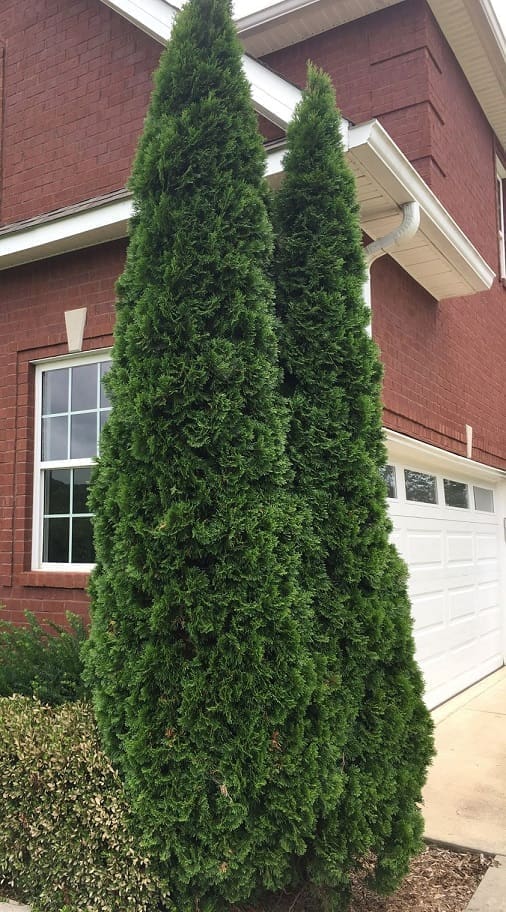

The disease has been observed killing young trees, but it generally does not kill large, healthy trees. Rosellinia needle blight affects conifers, including hemlocks, of all sizes and ages. Home Treatment Guides Tree Diseases Cercospora Blight Cercospora Blight Cercospora, Cercosporidium sequoia, commonly infected junipers, cedar, Leyland cypress, Japanese cryptomeria and arborvitae, causing unsightly needle browning in the lower portion of the plant. Leyland cypress trees are known for fast growth and for having their share of disease problems such as Seiridium and Botryosphaeria. Branch dieback is a symptom of Seiridium canker and dieback. PRICE: Handling Needle Blight on Leyland Cypress. If the fungus gets into the main trunk, it can kill the entire tree. Generally, the discolored branches are the symptom noticed first. Disease incidence increases under cool, wet conditions. When a cankered branch has only recently shown a change in color, needles will fall off easily when a hand is run along the branch. These are fungal diseases, and the spores spread from branch to branch by rain, wind, and tools. Needle and Twig Dieback Needle blights are characterized by rapid browning of needles, which often leads to dieback of twigs and branches. Asperisporium sequioae (Ellis and Everh. Usually, this begins on the lower branches. Williams-Woodward University of Georgia, Department of Plant Pathology, Athens, GA 30602 Nature of Work: Needle blight, caused by Cercosporidium sequoiae (Ellis and Everh.) Baker and Partridge syn. Leaf wetness and high humidity favor infection of the leaves. In Mississippi, three fungi are responsible for most Leyland needle blight diseases. The symptoms of needle blight diseases include needles browning and dropping. The needles turn brown and will begin to fall which is a completely normal process and one that happens on an annual basis. Needle blights are characterized by rapid browning of needles, which often leads to dieback of twigs and branches. Over recent years, Rosellinia needle blight has become more common across North Georgia, especially on young plants in dense groupings along streams or areas where it is wet. Diseases of Leyland cypress generally fall into three categories: blights, cankers, and root rots. So, what’s causing their needles to turn brown? Upon inspection of these trees, I’ve been able to confirm that the dieback is due to Rosellinia needle blight (caused by the fungus, Rosellinia Herpotrichoides). Despite having been treated for the Hemlock Woolly Adelgid, these trees do not seem to be doing well. The trees of concern have all been described as having browning needles and dieback. Over the past few weeks I’ve received numerous calls and emails from clients concerned over the welfare of their beloved hemlock trees. The fungus that causes Rosellinia needle blight causes hemlock needles to turn brown and mat together.


 0 kommentar(er)
0 kommentar(er)
